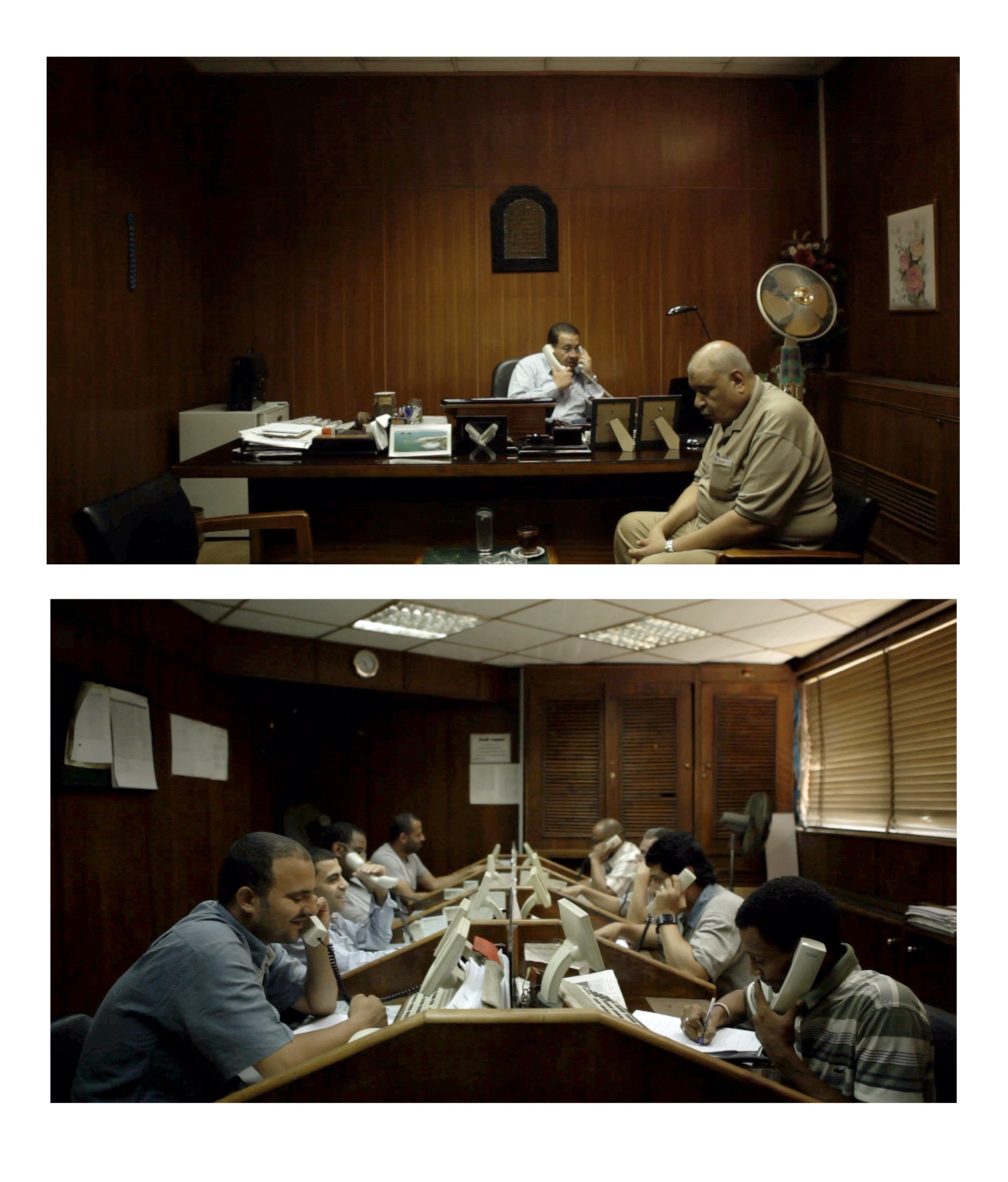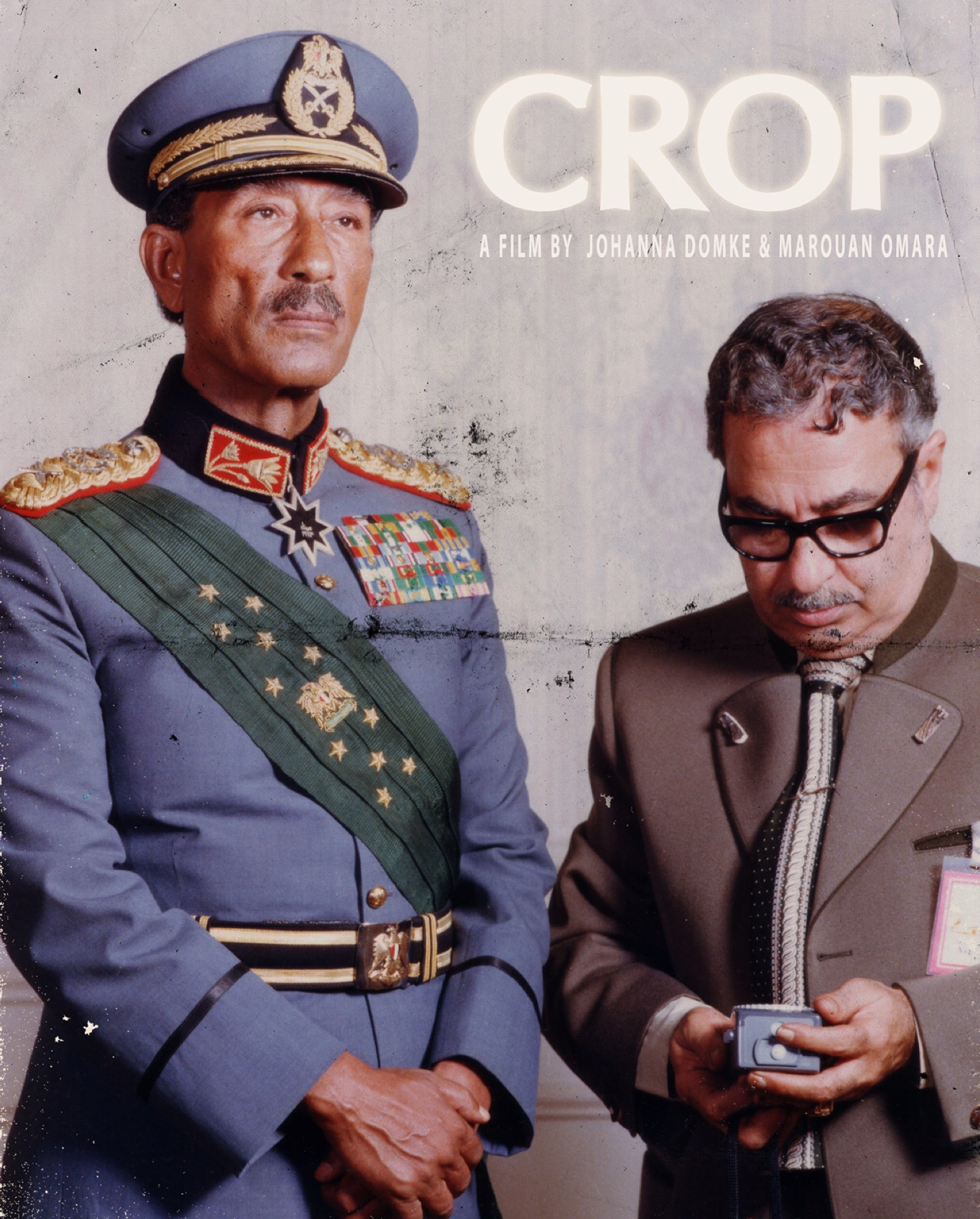CinemAfrica, the annual Stockholm film festival devoted to African film was held last week. I was in the jury selecting the best film. The Senegalese film Under the starry sky won the award, and the Egyptian documentary Crop got a honorary mentioning. Below is my review of Crop.
Crop
Directors: Marouan Omara & Johanna Domke (Egypt 2013)
What fits into a film frame without being seen? In this Egyptian documentary a whole political landscape from Nasser to the Egyptian spring is framed without being shown. It is narrated without being visualized. Close-up images of Presidents and central political events are visualized only in our imagination by a slow, thorough, monotonous speaker voice; the voice of a long-serving photo journalist of Egypt’s largest newspaper. What is visualized is beige, rustic, often symmetric, esthetic pictures from the boss’ office, newsrooms, and hallways down to the printer halls of the newspaper. Somewhere down the road of the narrative words and images swaps place in importance: images becomes background music as narration turns into spoken images. It is astute and it works.
This film is the antithesis of the Oscar nominated and celebrated documentary the Square. One of the main characters in the Square points out that the battle over Tahrir square “is in the images”; and the film is an overload of battle images and close-up events. Still, and paradoxically, Crop, without any footage from the Cairo streets, feels closer.
The narrator of Crop, the photo journalist gets a heart attack at the start of the political uprising at the Tahrir Square and he reports not just current events but also an Egyptian past in slow careful prose. He presents himself as a journalist that has throughout his career avoided being present at political unrests. As such his is the anti-thesis of journalism – the art of being absent. In the film he states:
“We the photo journalists of Al Ahram would not be sent to any political unrest only if they wanted to present a strike as bad for the country or the economy. We were never there for people fighting for better wages or better life conditions. It did not matter what kind of picture we took: they were either not published or used to prove something entirely different.”
He describes in intimate details how all pictures and stories of his Al Ahram, Egyptian state press, were over centuries distorted to fit the government in power. The narrator himself has taken photos of all the Egyptian presidents – described one by one. From the onset the government had a tight grip over the journalists, but in time journalists came to offer a self-censorship they hardly reflected over. This changed with the Arabic Spring and the events at the Tahrir Square.
Our narrator meets the popular uprising when in hospital recovering from his heart attack. Egyptian news media still denies what is happening, but the beds around him are packed with wounded people. He is filled with awe of the young man next to him who has been shot by the police but straight after waking up again starts to post his photos and film clips from his phone onto social media. The young man has even filmed the very sequence where he got shot. He admires the new bravery and clearly questions his own complicity.
“The people where fighting the images who had betrayed them for so long with their own images,” he says, and implicitly talks about his own images – the fake imagery he has spent his entire life creating.
With shifts in power the state directed newspaper he worked ceased to comprehend what they were supposed to report and who they should be loyal to. He states that some started fighting the police, but it by and large became a newspaper without direction – first time without a political patron to serve.
This is a brave tale of media complicity and power on the highest level. The absence of news images in the film is not only visually sass, but is making even more sense when one thinks of the content they show. It was all fake – made to prop up a regime that like so many others chose power over its people.
What happens with the Al Ahram’s and other journalists’ possibilities of free reporting after the reintroduction of military governance in the country is not touched upon in the film, but the narrator ends the film by saying:
“whatever will happen in the future – this moment of self-expression will never be taken away from the people of Egypt”

Leave a Reply